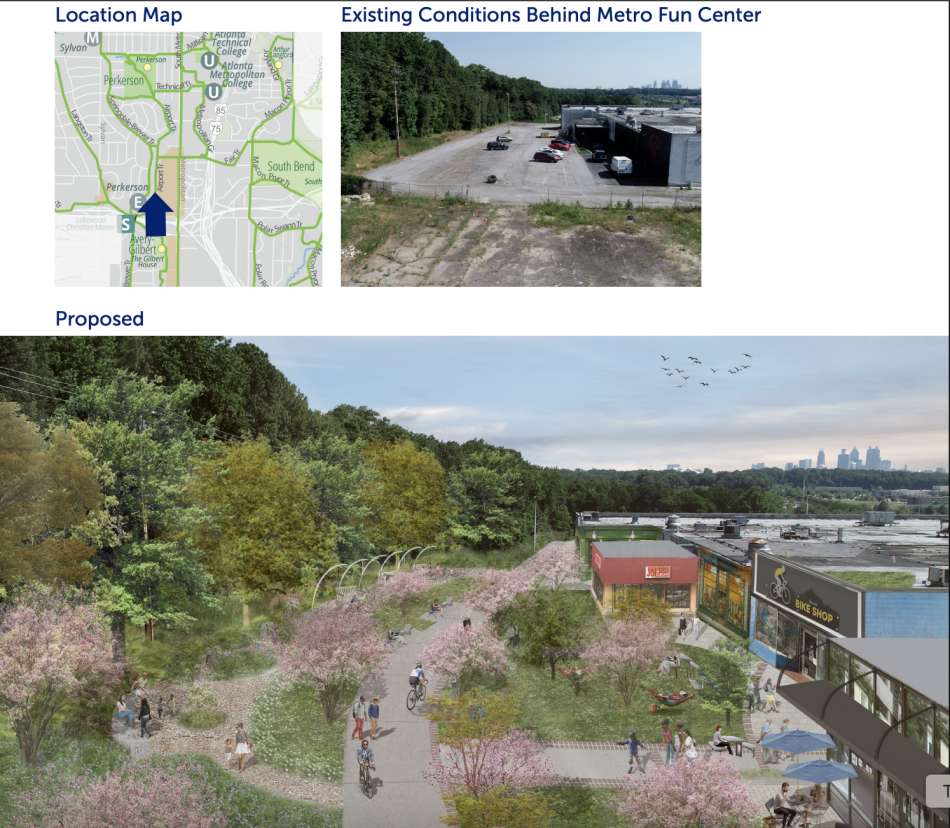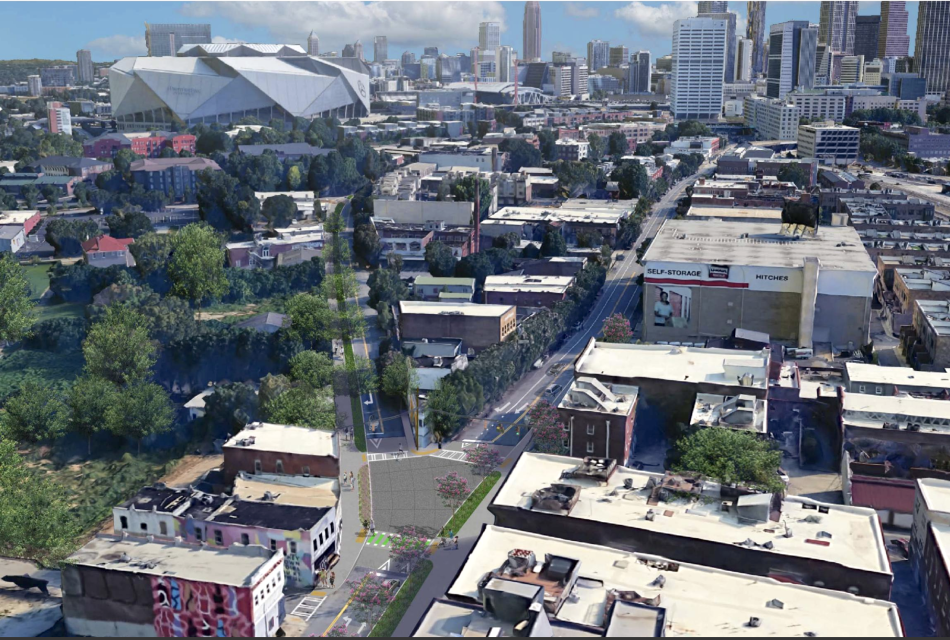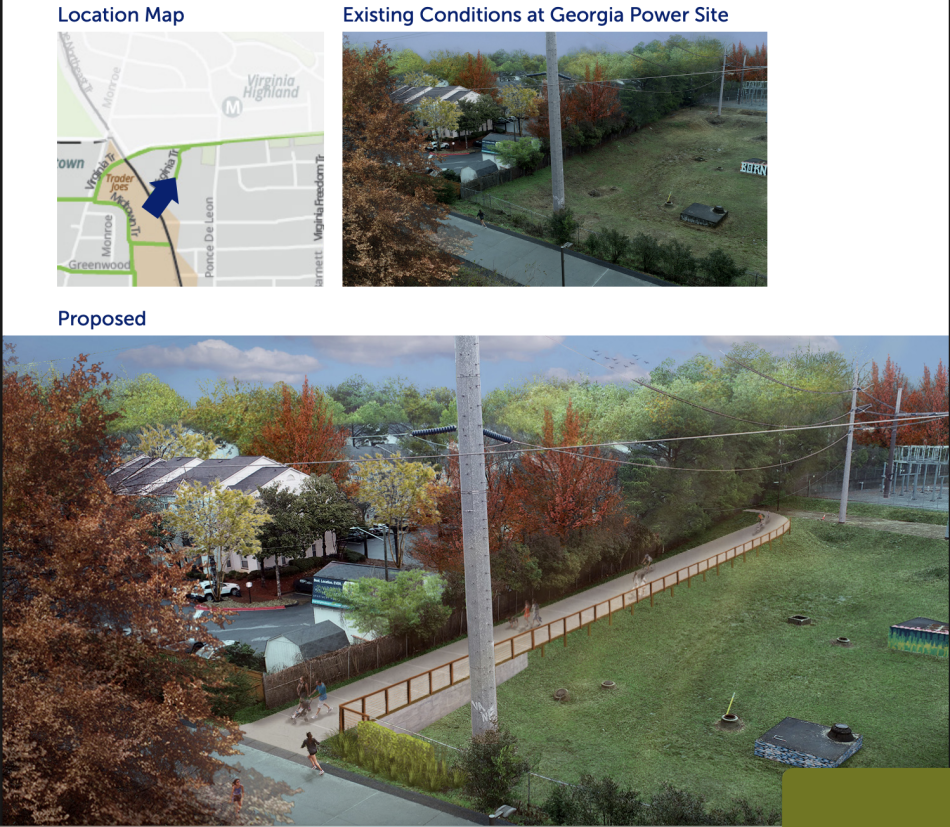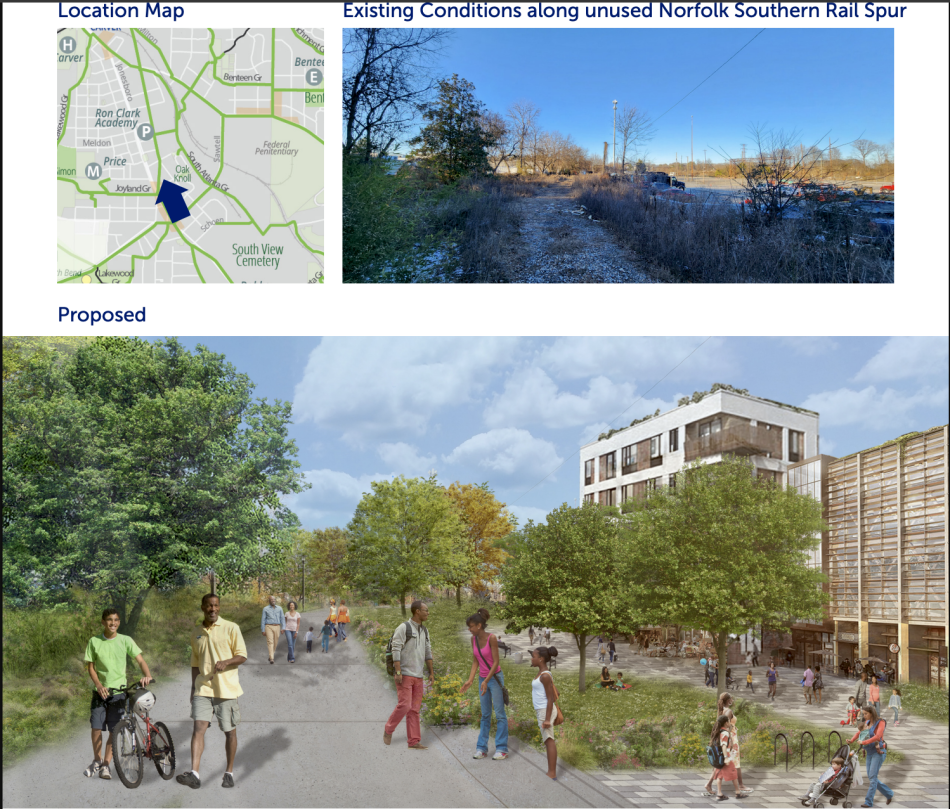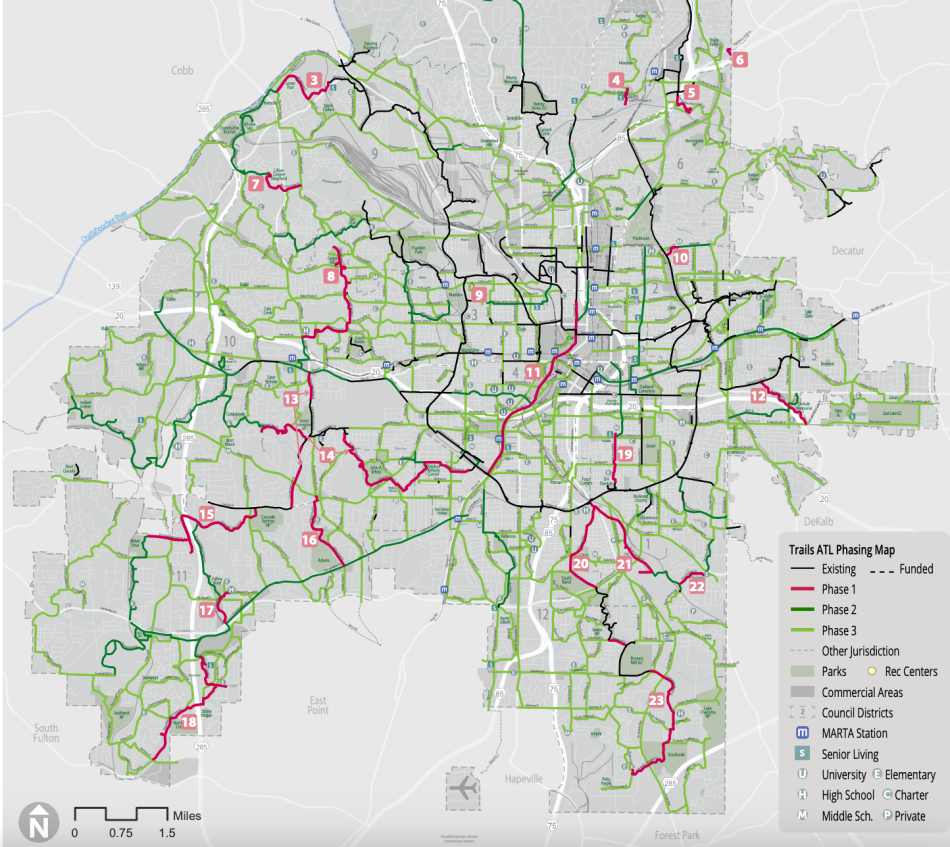If you think Atlanta’s a fairly bikeable, trail-connected city today—just wait. Should a sweeping plan called Trails ATL come to fruition, even partly, it would make today’s greenway multi-use network seem like the Stone Ages.
There’s a long way, however, between here and an Atlanta crisscrossed with off-street commuting and exercise options like the metro is webbed with roads today. And it’s going to be expensive. But a crucial hurdle is now in the rearview.
By a 15-0 vote, the Atlanta City Council on Monday approved the Trails ATL citywide expansion plan. That officially makes it part of the city’s Comprehensive Development Plan, a roadmap for infrastructure and development investments across Atlanta.
The council’s vote followed a year and ½ of planning efforts—with more than 100 public meetings—put together by Trails ATL spearheads, the PATH Foundation and Atlanta’s Department of Parks and Recreation.
PATH compiled the last citywide trail plan way back in 1992—before a local network was implemented that’s expected to surpass 100 miles soon.
The Trails ATL network would make that seem quaint. It calls for adding 420 miles of new trails in Atlanta, with “major implications for real estate and quality of life in the city,” as Eric Ganther, PATH Foundation trail planner, tells Urbanize Atlanta.
 Snapshot of how a fully implemented Trails ATL plan would crisscross the city. Existing trails are shown in black. Trails ATL/PATH Foundation
Snapshot of how a fully implemented Trails ATL plan would crisscross the city. Existing trails are shown in black. Trails ATL/PATH Foundation
According to proponents, an expanded, connected web of trails would serve a higher purpose than weekend exercise and bar crawls. Today, less than 40 percent of Atlantans have access to trails, which provide links to schools, parks, commercial hubs, and MARTA. If implemented, Trails ATL would boost that number to 94 percent of city residents, according to Mayor Andre Dickens’ office.
The finalized Trails ATL report provides a heaping smorgasbord of visuals, research, and projections for what a city crisscrossed with off-street greenways and bike lanes could look like. Phase 1 calls for 23 different projects completed within a decade from Buckhead to Lakewood to Adams Park and beyond—specifically, 29 miles of greenways and six miles of protected street trails.
Estimated total cost? Just north of $250 million.
We asked Ganther this week to shed light on how this all might start to happen—and where the money might come from. He responds via email below, with answers lightly edited for clarity and length.
Urbanize Atlanta: What do you hope Trails ATL achieves in the short term?
Ganther: In the short term, we want to ingrain network thinking into city leaders and key stakeholders—a network is only as good as its links.
We want to continue to show the community how we can provide access to Atlanta’s natural beauty and link its parks, schools, and commercial areas to one another with ecologically sensitive trail installations that leverage existing disturbance of sewer lines and old roadbeds, or in the public right-of-way, with minimal impact to motorists.
We want to continue to grow the story that all ages, all physical abilities, all Atlantans deserve safe and inviting transportation and recreation that provides a high quality of life.
UA: Specifically, what comes next?
Ganther: Next steps are to (1) work the plan into the zoning code so that developers know what to expect and how they contribute to—and benefit from—the network; (2) make sure the Comprehensive Transportation Plan Update captures the trail alignments and helps categorize some streets as “trail streets” where trail investments are prioritized; (3) work with city leaders on deploying a separate but corollary anti-displacement strategy that enables legacy residents to enjoy the benefits of trails without being pushed away from the table just as we're bringing the food; and (4) develop an implementation strategy to include funding, security, and communications for building 35 miles of Phase 1 trails.
UA: It's a tough time for infrastructure funding, obviously. Where do you foresee the primary sources coming from to make these trails happen?
Ganther: While all money is good money, local money is best because it is less beholden to arcane processes designed for building 12-lane interstates. While there are other valuable sources, we love TSPLOSTs, bonds, MOST, and philanthropy!
Whatever the source, we must encourage an efficient, streamlined trail delivery system that transparently tracks and communicates cost, progress, and challenges with the goal of getting trails built as soon as possible.
To this end, public and private trail investments should focus exclusively on trails so they can in turn provide a crucial input for solving other pressing problems including affordability, community cohesion, traffic congestion, food access, economic opportunity, ecological restoration, and so on.
UA: What’s the message the Trails ATL plan sends?
Ganther: At the end of the day, trails are simply wider sidewalks that provide the safest and most inviting access to places people want to go, either away from or alongside roadways. Atlanta has spoken loudly and clearly that it loves trails and wants more. So, let's give the people what they want—as soon as possible!
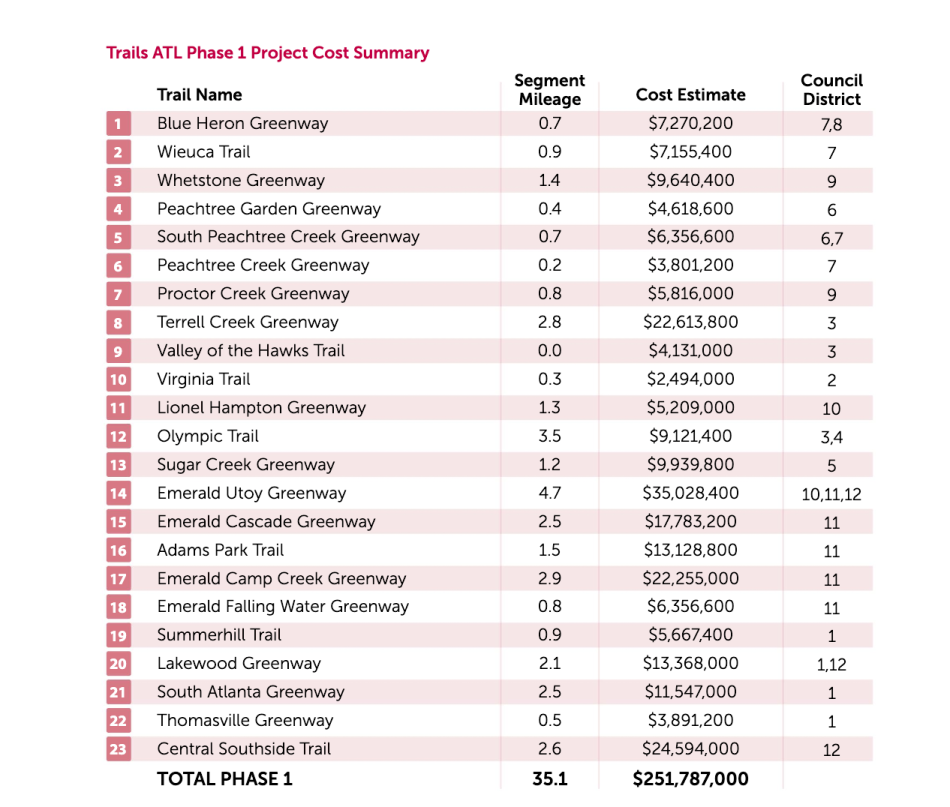 Breakdown of costs and segments for the Trails ATL network's 35-mile Phase 1. Trails ATL/PATH Foundation
Breakdown of costs and segments for the Trails ATL network's 35-mile Phase 1. Trails ATL/PATH Foundation
...
Follow us on social media:
Twitter / Facebook/and now: Instagram
• Clearer picture emerges for 'game-changer' Atlanta bike park (Urbanize Atlanta)





